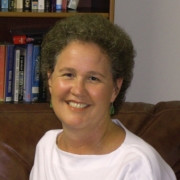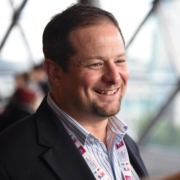Armand Doucet
Pedagogy during a Pandemic
Most children are now out of school because of the pandemic. How should we think about teaching and learning during the crisis? How can we ensure the basic needs of students continue to be met out of school? And can digital learning teach the whole child?
My guest today is Armand Doucet, one of the world’s foremost pracademics and teachers in education for the Digital Age. He has recently co-written a report with Deborah Netolicky, Koen Timmers, and Francis Jim Tuscano entitled Thinking about pedagogy in an unfolding pandemic: an independent report on approaches to distance learning during Covid 19 School Closures.
I spoke with Armand from his home where he was taking care of his son while speaking with me.
Citation: Doucet, Armand, interview with Will Brehm, FreshEd, 196, podcast audio, April 13, 2020. https://freshedpodcast.com/armanddoucet-2/
Will Brehm 1:17
Armand Doucet, welcome back to FreshEd.
Armand Doucet 1:18
Thank you. Thank you for having me, Will
Will Brehm 1:20
So, can I ask, where are you sitting right now? How are you managing working during this time of the pandemic?
Armand Doucet 1:27
I’m in the living room on our first floor in our house in eastern Canada. My wife is downstairs working away. She’s a director in finance and my two girls are downstairs drawing while my one-year-old is up here with me. So, you might hear him rumbling around and maybe a scream here and there.
Will Brehm 1:46
So, I’m actually interviewing two people today, perhaps.
Armand Doucet 1:49
You are! This is going to be his first podcast on FreshEd, so I’m pretty happy.
Will Brehm 1:54
So, you just -with a few colleagues- published an independent report about teaching during the pandemic, during COVID-19, or the novel coronavirus, as many people call it. So, in terms of education, you say that we need to put Maslow before Bloom. That’s one of the big point that you keep repeating in this report. What do you mean by this idea of Maslow before Bloom?
Armand Doucet 2:18
I mean, this isn’t new by any stretch, Will and you know that Maslow before bloom. It should be what every educator, and what every teacher in whatever school system should be striving for from the start. The problem with it is that it’s a societal problem. It’s not just education. So, in terms of Maslow before Bloom, Maslow means taking care of basic needs before we look at Bloom’s Taxonomy, which is learning complexities and a hierarchy of, you can progress through more complex learning. So, if you don’t do the basic needs, then it’s a real struggle for kids coming into school to be able to do Bloom’s Taxonomy.
Will Brehm 2:59
Right. So, basically, in a time of a pandemic, where everyone is now self-isolating, social distancing, staying at home under lockdown, or stay at home orders, the key here, for Maslow, is that children feel safe and have food. What other sort of basic needs would this include?
Armand Doucet 3:20
So, obviously, those are the two first ones. But if you take the physical structure of a school, I think people are now realizing how much goes through that building. And in terms of social programs, you’re looking at different things that students and kids get from the school that they might not be getting at this point. So, it could be laundry services, it could be showers, it could be the sexual health nurse, it could be occupational therapy, guidance for mental health, and we can go on and on. Oftentimes the school is that connecting hub for all those programs within a community. The more multicultural a community is, the more complex that it becomes because then you have also, the translation of language. Sometimes parents, their first language, or maybe their second or third language, is the language of the actual school. So, even communicating to those parents becomes an issue. So, when we’re looking at Maslow before Bloom in an age of pandemic, teachers are almost first responders. The moment schools close, teachers then become first responders in the sense of communicating what’s happening. Now, in many of the OECD countries, physical distancing is something that they can do. But in many other countries, that’s not the case, right? So, this report is looking at it from a global lens and saying, look, we’re going to look at basic needs, but the situation is a societal problem. And if you’re looking at UNESCO at the moment, they created a global coalition to look at exactly that. I think people are finally realizing that Sustainable Development Goal 4 will never happen without social programs that support the school so that children can come to school at a level-playing field to be able to then be educated.
Will Brehm 5:03
How have different schools responded to meeting the basic needs that would be identified by Maslow, and that you’ve sort of identified in their very great diversity?
Armand Doucet 5:14
That’s a good question. Well, you’re seeing a gauntlet of different things that are happening. Some schools just can’t respond. They don’t have the money, they don’t have the capabilities, they don’t have the capacity to be able to do so. You have some schools that are making phone calls directly to parents and saying, “What do you need? What can we provide?” You have some schools that are looking at creating meal programs so that kids can either come and pick it up at the school or the parents, or it’s a drop-off service that is happening. So, in terms of meals, there’s all sorts of things that are going across the board. You also have some schools that are giving gift cards so that you can go do groceries, but you’re seeing a big support from the community and non-profits and it’s a real multi-sector approach to doing this. My hope is that coming out of this, we will realize that these social programs are key. In really equitable systems like Finland, the rumor is that they pivoted within 40 hours. And from one of my conversations with my colleagues, that’s exactly what happened. But Finland’s got one of the most equitable systems in the world where every kid gets a good meal every day and they could pivot quite quickly. There’s some more affluent regions where you have 95% of the people that have access to the internet and bandwidth and have multiple devices at home. Well, that’s a quick pivot to online learning in many ways. But those basic needs need to be met. And you’re seeing those meals happen but you’re also seeing mental health. So, guidance counselors, psychologists, and so on that they’re given phone numbers that you can call so that if you have any issues, you can contact somebody. There’s really a multi-layer approach to this.
Will Brehm 6:56
And what about in low- and middle-income countries? What do we know that’s happening in those contexts in terms of the way in which schools or teachers can help meet communities and students’ basic needs?
Armand Doucet 7:10
In terms of meal plans, and in terms of mental health, and sexual health and so on, in most of those countries, there’s partnerships that exist already with global organizations, such as UNICEF, UNHCR, which is the United Nations Eefugee section. There’s many other partners that come into play there that are playing a part in trying to help out. Plus, local foundations and so on. But the reality is, you’re not going to fix social issues that have been a long time brewing, and now it explodes because now we take the physical structure that the school is outside of the equation. And now people are realizing how much was happening in those schools more than just the formal education. And so, I think that’s part of what’s happening in those situations is we’re starting to realize that we’re really behind what we believe should be an inclusive and equitable education system for all?
Will Brehm 8:05
Is there anything that can be learned from countries that have had to sort of provide education in emergencies? Because there’s quite a long history of conflict and post-conflict countries, issues of refugee education in either camps or in countries’ actual education systems, and dealing with all sorts of different crises that might be comparable, but maybe not exactly comparable to the pandemic. So, is there anything that we can begin to learn from countries that have experienced education in emergencies?
Armand Doucet 8:39
I think there is. There’s many different forms of distance-learning number one. So, if you look at remote learning, where countries struggle to get to certain areas, or they don’t have strong education systems in play, they’ve used what we would call like, “mailing packages” of information out to remote areas. Getting the student to do the work and then sending it back, or they might be broadcasting from a central location for television or radio. The problem with those is that it’s very much asynchronous with no contact directly with the teacher. So, it’s going to fit a gap at this point but not necessarily address the main issue- which the main issue is bandwidth at this point. Access to bandwidth, access to data, being able to open up those networks so that we can have an online component to it. Now that comes with a major ethical question. These learning management systems as we’re progressing through it, we need to make sure that we protect students’ data and privacy as we’re going through and we’re deciding which tools we’re going to use. And as we both know, when a crisis happens in any kind of sector, there’s opportunity for growth and innovation and some positive things coming out but there’s also opportunity for corruption that we need to watch out for.
Will Brehm 10:01
Have you seen any of this already taking place? Corruption or things that we should be very careful about when this massive shift to online learning and using all sorts of these new online learning platforms, perhaps very quickly because of the pandemic?
Armand Doucet 10:15
Well, I think it’s definitely something that we need to watch out for in terms of austerity measures, right? Coming out of this -if we do distance learning well, and we are thriving in many ways- you’re going to have some governments that say, “Well, we don’t have to have schools or pay teachers because we can have one person do it from a remote area”. But that’s not realistic. It’s not a true formal education. It’s one part of the education process that happens in schools, right. So, it’s a holistic approach. There’s so many different things that happen in a school. So many moving parts, including development of competencies, skills, social, cultural, global citizenship, the curriculum outcomes, and I could go on and on. That’s one thing that I’m worried about. The second thing I’m worried about is we are going to overwhelm our parents and our learners at home. What I mean by that is that we’re going to get really overzealous with communication, contacting, we’re not managing expectations, we’re not managing the workload, we’ll have teacher burnout, because they’re going 24-7. If you look at high schools in Western hemisphere countries, you’re looking at about 100 to 140 students per teacher. If you’re managing all that communication, that becomes quite different than having to manage a classroom and a few communications online. So, there’s different things that I’m worried about coming out of this, but there’s also the possibility for finally innovating properly. And like I said earlier in this discussion, I think the first step is a societal question about having the right social programs so that all kids can come into school ready to learn and willing to learn.
Will Brehm 11:56
And so, what would that look like in terms of properly innovating in your mind?
Armand Doucet 12:00
Well, number one is probably the proper taxation system to be able to have schools that are all great. If you’re looking at some of the countries around the world, it’s based off land tax. Well, if you go into Compton in LA versus if you’re going to Beverly Hills, the land tax is going to be vastly different. And the school that’s going to be delivered or built is going to be vastly different. So, that’s the first thing I think is, you need a taxation system that’s really addressing the need. In Canada, we have three warm meals a day for our prisoners that are in jail. Why don’t we have at least two warm meals a day for students that can’t afford it? That’s something that’s never made any sense to me. The ones that are the most vulnerable are the ones that don’t actually get fed and they have nothing to do with it, right? They can’t go to work at six years old. So, why are we letting this happen? I think this pandemic is giving us the opportunity to realize how connected we are and what global solidarity truly means. And we have these large questions and sustainable questions that need to be answered. But I think maybe this is the first step. This is like a formative assessment if you want to use an education and how we react to this, and how we react to this school closure across the world, I think we’ll decide if we will be able to reach Sustainable Development Goal 4 by 2030.
Will Brehm 13:20
I want to now look a little bit more in depth at the online learning experience that many students have now been thrown into. One of the fears I think that many parents have -I’ve seen a lot of op-eds written about this- is how much screen time their children spend every day. And people are very concerned about increasing our amount of screen time. So, in this new world of online learning, how do we make sure that students aren’t staring at the screens all day long now at home?
Armand Doucet 13:53
That’s an excellent question. I’m fearful of it too, Will, I’m not going to lie. I’ve got three young kids, one is in kindergarten. And I don’t want her staring at a screen, I’ll tell you what, more than 10-15 minutes. And if it’s going to be more than that in a day, it’s got to be spread out. The reality is that when we are designing for distance-learning, and it’s not just online learning, you got to look at it from a lens of distance-learning. So, yes, there’s a component online. It might be videos, it might be research, it might be group collaboration. But you can also do that offline, right? And that’s probably something that we need to think about as we’re designing that remote learning, or this crisis learning at this point. Once we get to coming back from this school closure, the reality is that we might have multiple school closures over the next 12 months to two years, even more. So, if that’s the case, when we go back to our classrooms as teachers, we need to think about the design of our learning experience and the design of our classrooms so that we can blend in the virtual world and the actual classroom together so that it’s a bit more seamless in terms of the transition. This time around, it’s the first time since World War II that we’ve closed pretty much every school around the world at this point. So, you’re looking at 1.5 billion students getting removed from the classroom, now getting pushed to home, and us sort of reacting to it and realizing the equity gap is so large that online learning is not the only option that we need to use. Because otherwise the equity gap is going to keep widening and the most vulnerable students are going to struggle. So, when we get back, have a bridge gap measure now. This is crisis learning, but when we get back, let’s get better prepared to be able to transition with like we said, these foundation blocks for social programs so that if it does happen, we can go online learning, but we also understand what the design of it should look like. So, I’ll give you an example of that: Elementary School, K to 3, let’s say- maybe it’s a weekly message from the schoolteacher on the Sunday night. And these are the five or six things that we want to accomplish this week in this subject and in this subject. And for social studies and science, these three things. You send out a list, and then from there, you might have office hours. Now, as a teacher, your office hours are going to change a bit, because if you have working parents at home, you can’t have it during the day. So, maybe your working hours at this point for office hours might be from 7:30 to 8. But in the same time in the morning, you might not have as many connections with other people. So, that might be a possibility of a way to approach it. Or it might be that you get all your students together in the morning for a circle talk, 20 minutes everybody can pair-share, and then from there, they move on to okay, these are the steps of what we want to do today, I want you to explore your house and look for these five items and I want you to describe them to me and so on and so forth. There’s many ways to look about it but you’ve got to look at it from a lens of learning, not just formal education.
Will Brehm 17:00
It seems like you’re also saying that we need to look back at the history of distance learning a bit more seriously. Because there is a long history of correspondence education, of education through radio and other means that are certainly low-bandwidth and perhaps more accessible and would be a bit more equitable.
Armand Doucet 17:20
They are. The problem with those is that it does come from a centralized source. It’s not personalized to the students. And you’re taking into account that you know everybody that you’re communicating with. So, it goes away from the trend of personalization at the moment, but it does transition the content to the learner. The problem that’s happened with those types of learning is usually engagement, which is funny enough, the same problem with MOOCs (Massive Open Online Courses). If you look at the success rate with MOOCs online, it’s about 20%, I believe is the success rate. And it comes down to engagement. And I think the engagement issue in this situation is the personal touch. So, what do I mean by that? I mean that there needs to be teachers that are associated with these students, and you need to be able to phone in. Oftentimes, if it’s radio or television, you might still be able to phone or communicate through letter, but there needs to be a personal touch. Now we are in a crisis, we don’t know how long this is going to last. So, the realities of being able to put this into place are pretty good. But it’s really a quick fix measure. It’s not going to be necessarily the best that we could do, but it’s the best that we can do at this point. I think one of the major things that we need to look at is looking at the curriculum, and what’s essential and then rethinking, how do we actually do schooling? So, coming out of this, one of the major things that I believe could happen is that we could look at it from the perspective of, okay, what are the major pressures and how is our system aligned in education? And right now, in many areas of the world, it’s by standardized testing. That is the major alignment to the classroom. And whether people believe it or not, even though you have the vision and mission of a holistic education system, the pressures of standardized testing are through the roof. You know, the biggest uproar in England from what I was reading is because of the A-Levels being canceled. So, that’s something that we need to reassess right now, and I think we have a golden opportunity to do so. And we can approach our classrooms from a talent development point of view instead of a grading and sorting point of view.
Will Brehm 19:37
Right. So, when it comes to assessment, are schools beginning to think about doing assessment differently other than simply canceling examinations, like in the UK canceling a lot of those end of A-levels, tests? How can we think about assessment in this time of the pandemic and in emergency crisis situations that many people face today?
Armand Doucet 20:05
You know, it was funny, I saw a post on one of my social media feeds that said, you know, a school here that was very scared about cheating during assessments with online learning. And I thought to myself, you know what, that’s the least of your concerns at the moment, right? But it just brings you to the point to understand how much pressure standardized testing and testing comes into play. To me, I’ve got a coaching background, right. And as a coach, you always want your players to develop better and better and better. And every opportunity you have to practice, to train, to play is an opportunity for formative assessment and critical feedback. That’s the key, I believe, with online learning as well. Now they have all these tools at their disposal. So, you need to rethink what you want them to produce, what you want them to create, how you connect them with the curriculum. And I think that’s the issue, is the design of learning, right? And the design of the learning experiences. So, this is a situation where we have to. We have to make that pivot.
Will Brehm 21:18
So, if these school closures go on for 12 months, 18 months -I mean, people don’t really know yet but it could be very disruptive for quite some time- should we be concerned that when students finally do go back to schools, which presumably they would, that these students are going to have progressed over those 12 to 18 months at very different rates and to very different degrees based on their ability to access the online material, the ability to have parents devote their time and energy to their learning, the ability to have safe spaces, whatever it is. So, what should we be thinking about when it comes to the equity issues when children actually return to school?
Armand Doucet 21:58
I think the first thing is making sure where the kids go back to school. There’s going to be a lot of anxiety, a lot of stress, there’s going to be kids that have lost their parents, there’s going to be kids that have lost lots of family members, they might have lost siblings. So, we’re going to need to address that first and foremost. We need to get them back into school, and we need to have programs in place to take care of them. So, it could be mental health, it could be grievance counselors, there’s a gauntlet of different things that need to be taken care of, but we need to get them back into schools. UNESCO is quite clear with the research on what happens when kids are removed from school. And they actually have research that looks at weekly, monthly, yearly, the more removed they are from school, the more likely they are to get into child labor, child slavery, child prostitution ,and the list goes on, child soldiering ,and so on and so on. So, we really need to make sure that that’s first and foremost. It might mean that teachers need to go knock on doors and make sure that we can take care of them, or school leaders, or school officials. I think that’s the first thing. The second thing is depending on the amount of time, if it’s a bridge gap, so if we’re out for five or six months, we go back to school then we need to set up our classrooms in the right way, and make sure that we have access to the tools that we need. That’s not going to happen all over the world. But you know what kind of tools that you’re going to have access to when school closures happen. So, you’ve got to plan for that especially for the next, I believe, two years at least. So, that’s something that we need to look at. If it’s 12 to 18 months or 12 to let’s say two years. You know what I’m imagining in my head and I’m not an expert in this by any stretch, right? Will, I’m just giving opinions and possible solutions and ideas, and every context is vastly different.
Will Brehm 23:58
So, you are an internationally recognized teacher, you have seats at the table at various international organizations, you write books about teaching, for some of the parents that are listening to this show, what sort of recommendations would you give to balance the educational needs of their children and the work that they have to do at home to keep getting a paycheck or to keep putting food on the table. What tips would you give to a parent to try and manage the situation in the best way basically, that forefronts their children’s education?
Armand Doucet 24:42
First thing is, give yourself a break. Take a collective deep breath and give yourself a break. This is not homeschooling. You have a ton of time to get ready for homeschooling in most situations. This is crisis education. And you can’t take all of that on to your plate. You don’t magically become a teacher. Contrary to popular belief, “those who can’t do, teach”, that’s not true. And I think people are starting to realize that. So, let’s take a collective deep breath and say, Okay, what can we do in this setting right now? You can use what’s happening, and have open discussions with your family members. You can work on the social, emotional. The major thing that parents can do is read to their child. That’s an important situation. It’s something that you can do that’s concrete. But I think taking care of the basic needs of the child is what every parent should be doing right now or trying to do. If you do that you’ve been successful during this pandemic. Make sure they know they are loved. Make sure they understand what’s going on, and why they need to practice physical distancing. Tell them when you’re doing something great for the community, put your hand up when you can to help. But the truth of the matter is that I think that’s the first thing that parents can do. The second thing, Will, is to create that relationship with your teacher to try to help progress your child’s learning, but understand that you’re not going to be able to do everything on one day. Everybody’s sort of working through the design process of this and the truth is that distance-learning, it takes more time to do assignments for numerous reasons, right? So, don’t feel bad if you only get to one outcome in the day. At least you got to one. And some people are not even going to be able to do that. And that’s all right. It’s alright to let kids play. Pasi Sahlberg is a big proponent of play-based learning. This is a chance for them to play with their siblings, play alone, play with you, and it’s a way for them to learn. Honestly, I think kids are resilient. I think kids are going to come out of this really well. I’m not so sure about parents and teachers to tell you the truth. But the reality is, I think the kids are going to be alright, as long as we have those bridge gap measures and social programs to really give them an opportunity to thrive coming out of it.
Will Brehm 27:01
Well, Armand Doucet, thank you so much for joining FreshEd again. It looks like you have your hands full, so, best of luck in this self-isolation, and thank you for all of the tips that you’ve given parents and teachers worldwide.
Armand Doucet 27:14
I appreciate it, Will. I appreciate the opportunity to have a discussion with everyone. And I just want to leave with one point: Every context is different. Just try to do your best to be there for your child.
Coming soon
Coming soon









